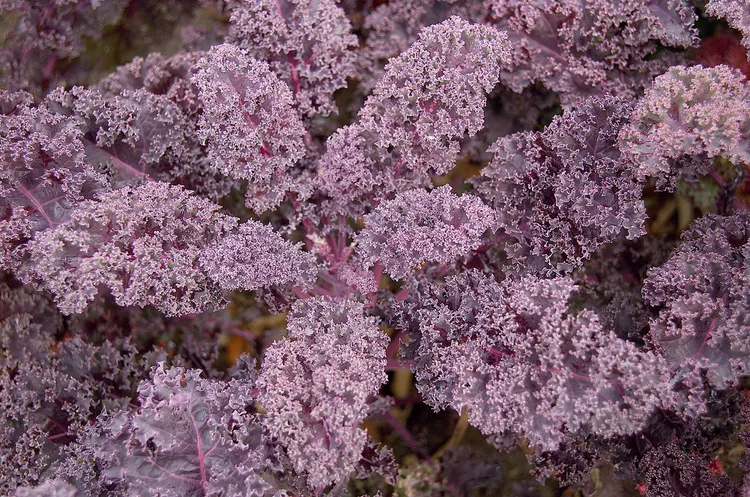10 Best Companion Plants for Kale

Companion planting kale can help deter common garden pests, which can riddle leaves with holes or cause stunted growth. From small herbs to larger veggies, there are several easy-to-grow companion plants for kale. Growing these plants together can naturally minimize pests, and even boost your kale harvest. Use these guide to find the right plants for your available growing space, along with a few gardening tips to help you grow healthier plants this season.
Alliums
Cabbage loopers and aphids seem to zero in on kale, soon making a mess of your crop. But research has shown that the strong scent of plants in the allium family can keep these and other pests away from your kale plants. Try growing garlic, chives, leeks, or onions nearby to reduce pest problems.
Beans and Peas
Beans and peas are legumes that have the ability to add nitrogen to the soil, which can boost the growth of nearby plants. Extra nitrogen will support the development of lush kale leaves and healthier plants overall. If you’re working with a small garden space or you’re growing your vegetables in containers, look for bush-type beans, which have a more compact growth habit.
Catnip
When in bloom, catnip is irresistible to pollinators and other beneficial insects that prey on pests. Companion planting kale with catnip can lure these useful insects into your garden to help to protect your crop. However, catnip can spread aggressively, so to prevent it from taking over, you may want to keep this herb in a container near your kale.
Cilantro
Cilantro flowers will draw hoverflies and other beneficial insects to your garden beds. Once there, these predatory insects will feed on aphids and other pests. Even better, kale and cilantro both thrive in cool weather and have similar growing needs, making them excellent plants to grow together.
Dill
When allowed to flower, dill blooms will entice beneficial insects to your garden to help control pests. Like kale, dill is also a cool weather-loving crop and it can be very productive in both spring and autumn gardens. Planting dill beneath your kale can also provide extra shade to your dill and keep it from bolting as quickly during the summer heat.
Marigolds
Research has shown that as a companion plant, marigolds help keep a wide number of insects away from vegetable crops, including kale. For example, some types of marigolds attract pollinators, such as wasps that attack aphids. Plus, the cheery orange and yellow flowers are edible. Marigold varieties range in size from tall plants to dwarf cultivars, which makes it easy to find the right marigold variety to suit your growing space.
Nasturtium
Nasturtium can work as a a "trap crop" for backyard gardens because pests often prefer them to vegetables. Companion planting kale with nasturtium can draw aphids, flea beetles, and other insects away from your kale plants. Nasturtiums are also easy-going plants that produce colorful orange and yellow flowers, which make wonderful salad toppers and edible garnishes.
Radishes
Radishes are small and fast-growing vegetables that can be easily squeezed into limited garden spaces to boost your harvests. Sowing radishes beneath your kale will put empty soil to good use and radishes will enjoy the extra shade from the taller kale plants. Like kale, radishes are also cold weather crops that thrive in spring and autumn gardens when temperatures are cooler.
Rosemary
Like many other aromatic herbs, rosemary has a strong fragrance that can repel a number of garden pests, including aphids. Planting rosemary near your kale can help to protect your greens. Additionally, because rosemary stays smaller in cooler climates, it usually won’t compete with kale for sunlight. Just keep in mind that rosemary prefers drier soil, so you may want to grow it in a small container next to your kale to limit the amount of water it receives.
Sweet Alyssum
Sweet alyssum is mostly kept as an ornamental or flowering groundcover, prized for its dainty white, pink, or purple flowers that are full of nectar. When interplanted among your kale, sweet alyssum will attract lots of beneficial insects. Depending on your tastes, you can sow sweet alyssum right in your garden to help suppress weeds, or you can keep it in a container near your kale patch.